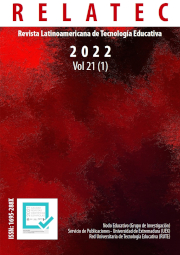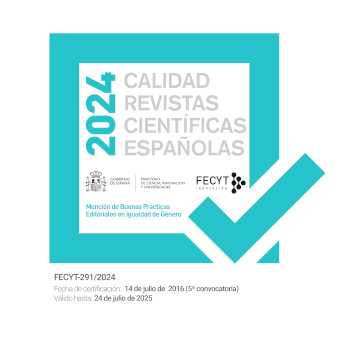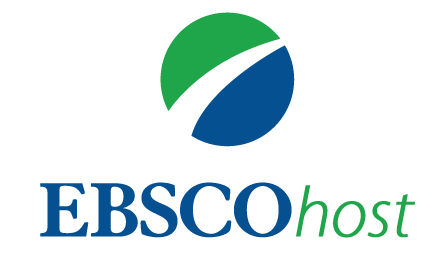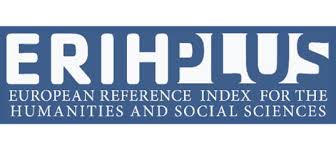Inteligência Artificial na educação: Big data, caixas pretas e solucionismo tecnológico
DOI:
https://doi.org/10.17398/1695-288X.21.1.129Palavras-chave:
Aprendizado aprimorado por tecnologia, Inteligência artificial, Análise de aprendizagem, Tecnologias persuasivas, Contextos educacionaisResumo
O uso da tecnologia digital está permeando e transformando todos os sistemas sociais, e a educação não é exceção. Na última década, o desenvolvimento da Inteligência Artificial deu um novo impulso à esperança de dotar os sistemas educativos de soluções “eficazes” e mais personalizadas de ensino e aprendizagem. Educadores e pesquisadores da área da educação e formuladores de políticas, em geral, carecem do conhecimento e da experiência necessários para compreender a lógica subjacente a esses novos sistemas. Além disso, não temos evidências baseadas em pesquisas suficientes para entender completamente as implicações para o desenvolvimento dos alunos tanto do uso extensivo de telas quanto da crescente dependência de algoritmos em ambientes educacionais. Este artigo, destinado a educadores, acadêmicos da área de educação e formuladores de políticas, apresenta primeiramente os conceitos de “Big Data”, Inteligência Artificial (IA), algoritmos de aprendizado de máquina e como eles são apresentados e implantados como “caixas pretas”, como bem como seu possível impacto na educação. Em seguida, enfoca os discursos educacionais subjacentes que historicamente têm visto as tecnologias de informação e comunicação como uma panacéia para resolver problemas educacionais, apontando a necessidade de analisar não apenas suas vantagens, mas também seus possíveis efeitos negativos. Termina com uma breve exploração de possíveis cenários e conclusões futuras.
Downloads
Referências
Alter, A. (2017). Irresistible: The Rise of Addictive Technology and the Business of Keeping. Penguin Press.
Banks, J. A., Au, K. H., Ball, A.F., Bell, P., Gordon, E. W., Gutiérrez, K. D., Heath, S. B., Lee, C. D., Lee, Y., Mahiri, J.,
Nasir, N. S., Valdés, G., Zhou, M. (2007). Learning in and out of school in diverse environments. Life-long, Life-wide, Life-deep. The LIFE Center for Multicultural Education, University of Washington. http://lifeslc.org/docs/Banks_etal-LIFE-Diversity-Report.pdf
Bernstein, B. (1970). Education cannot compensate for society. New society, 26, 344-345.
Bogost, I. (2015, January 15). The Cathedral of Computation. The Atlantic. http://www.theatlantic.com/technology/archive/2015/01/the-cathedral-ofcomputation/384300/
Buchanan, R., & McPherson, A. (2019, July 8). Education shaped by big data and Silicon Valley. Is this what we want for Australia? EduResearch Matters, https://www.aare.edu.au/blog/?p=4182
Calvet Liñán, L., & Juan Pérez, Á. A. (2015). Educational Data Mining and Learning Analytics: differences, similarities, and time evolution. RUSC. Universities and Knowledge Society Journal, 12(3), 98-112. http://dx.doi.org/10.7238/rusc.v12i3.2515
Castells, M. (1996). The Rise of the Network Society (Information Age), vol. 1. 2nd ed. Blackwell Publishers.
Chakroun, B., Miao, F., Mendes, V., Domiter, A., Fan, H., Kharkova, I., Holmes, W., Orr, D., Jermol, M., Issroff, K., Park, J., Holmes, K., Crompton, H., Portales, P., Orlic, D., & Rodriguez, S. (2019). Artificial Intelligence for Sustainable Development: Synthesis Report, Mobile Learning Week 2019. UNESCO
Cohen, D. K. (1988). Educational Technology and School Organization. In R. S. Nickerson & P. P. Zodhiates (Eds.), Technology in Education: Looking Toward 2020 (pp. 231264). Hillsdale, NJ: Lawrence Erlbaum Associates, Pu.
Cuban, L. (1986). Teachers and Machines: The Classroom Use of Technology Since 1920. Teachers College.
Cuban, L. (1993). How teachers taught: constancy and change in American classrooms, 1890-1990. Teachers College Press.
Delors, J. (1998). Learning: The treasure within. Unesco.
Desmurget, M. (2020). La fábrica de cretinos digitales. Península.
Dick, S. (2019). Artificial Intelligence. Harvard Data Science Review, 1(1). https://doi.org/10.1162/99608f92.92fe150c
Dickson, B. (2021, January 28). Demystifying deep learning. Techtalks. https://bdtechtalks.com/2021/01/28/deep-learning-explainer/
European Commission (2021). Regulatory framework proposal on Artificial Intelligence. https://digital-strategy.ec.europa.eu/en/policies/regulatory-framework-ai
Finn, E. (2017). What Algorithms Want. Imagination in the Age of Computing. The MIT Press. https://doi.org/10.7551/mitpress/9780262035927.001.0001
Fogg, B. J. (2003). Persuasive Technology: Using Computers to Change what We Think and Do. Morgan Kaufmann Publishers.
Fogg, B. J. (2009). A Behavior Model for Persuasive Design. Persuasive’09, April 26-29.
Claremont, CA. https://doi.org/10.1145/1541948.1541999
Gates, B. (1996). The road ahead. Viking.
Goldstein, H. (2018). Measurement and Evaluation Issues with PISA. In L. Volante (Ed.), The PISA Effect on Global Educational Governance (pp. 49-58). Routledge.
Google (2018). How Google Fights Piracy. https://www.blog.google/documents/25/GO806_Google_FightsPiracy_eReader_fi nal.pdf
Hartong, S., & Förschler, A. (2019). Opening the black box of data-based school monitoring: Data infrastructures, flows and practices in state education agencies. Big Data & Society. https://doi.org/10.1177/2053951719853311
Hilbert, M., & López, P. (2011). The World’s Technological Capacity to Store, Communicate, and Compute Information. Science, 332(6025), 60-65. https://doi.org/10.1126/science.1200970
Isaak, J., & Hanna, M. J. (2018). User Data Privacy: Facebook, Cambridge Analytica, and Privacy Protection. Computer, 51(8), 56-59. https://doi.org/10.1109/MC.2018.3191268.
Knox, J., Williamson, B., & Bayne, S. (2020). Machine behaviourism: Future visions of ‘learnification’ and ‘datafication’ across humans and digital technologies. Learning, Media and Technology, 45(1), 31-45. https://doi.org/10.1080/17439884.2019.1623251
Lahitou, J. (2018, August 18). Silicon Valley Parents Choose Low & No Tech Schools. What About Your Kid’s School? The Good Man Project. https://goodmenproject.com/uncategorized/silicon-valley-parents-choose-low-notech-schools-thats-probably-not-the-tech-policy-at-your-kids-school/
Lennon, T. (2016, August 11). Babylon’s ancient clay tablets made more census than today’s computers. The Daily Telegraph. https://www.dailytelegraph.com.au/news/babylons-ancient-clay-tablets-mademore-census-than-todays-computers/newsstory/3f76510db70c6bfd1185192a2e90badc
Lupton, D., & Williamson, B. (2017). The datafied child: The dataveillance of children and implications for their rights. New Media & Society, 19(5), 780-794. https://doi.org/10.1177/1461444816686328
MacDonald, B. (1993). Micromundos y mundos reales. Una agenda para la evaluación. Comunicación y Pedagogía-Infodidac. October, 31-41.
McClintock, R. O. (1993). El alcance de las posibilidades pedagógicas. In R. O. McClintock, G. Vázquez, M. J. Streibel (Coord.), Comunicación, tecnología y diseños de instrucción: la construcción del conocimiento escolar y el uso de los ordenadores (pp. 104-125). CIDE-MEC.
Morozov, E. (2013). To save everything, click here: The folly of technological solutionism. Public Affairs.
Muhammad, S.S., Dey, B.L., & Weerakkody, V. (2018). Analysis of Factors that Influence
Customers’ Willingness to Leave Big Data Digital Footprints on Social Media: A Systematic Review of Literature. Information Systems Frontiers, 20(3), 559-576. https://doi.org/10.1007/s10796-017-9802-y
Negroponte, N. (1995). Being Digital. Alfred A. Knopf.
Noble, D. D. (1991). The Classroom Arsenal: Military Research, Information Technology, and Public Education. The Falmer Press.
O’Neil, C. (2016). Weapons of Math Destruction: How Big Data Increases Inequality and Threatens Democracy. Crown Publishing Group, USA.
OECD-CERI (2006). Personalising Education. OECD. http://dx.doi.org/10.1787/9789264036604-en
OECD (2015). Students, Computers and Learning: Making the Connection, PISA. OECD. http://dx.doi.org/10.1787/9789264239555-en
OECD (2019). OECD Principles on Artificial Intelligence. https://www.oecd.org/goingdigital/ai/principles/
Papert, S. (1993). The Children's machine. Basic Books.
Peirano, M. (2019). El enemigo conoce el sistema. Manipulación de ideas, personas, influencias después de la economía de la atención. Debate.
Perelman, L. J. (1992). Schools Out. Hyperlearning, the New Technology, and the end of Education. William Morrow and Company, Inc.
Phillips, D. C. (2014). Research in the Hard Sciences, and in Very Hard “Softer” Domains. Educational Researcher, 43(1), 9-11. https://doi.org/10.3102/0013189X13520293
Pigott, T. D., Tocci, C., Ryan, A. M., & Galliher, A. (2021). Quality of Research Evidence in Education: How Do We Know? Review of Research in Education, 45(1), vii-xii. https://doi.org/10.3102/0091732X211001824
Pinar Saygin, A., Cicekli, I. & Akman, V. (2000). Turing Test: 50 Years Later. Minds and Machines 10, 463-518. https://doi.org/10.1023/A:1011288000451
Popkewitz, T. (2018, September 6). The Paradox of Research: The Good Intentions of Inclusion that Excludes and Abjects. ECER 2018. Bolzano, Italy. https://cutt.ly/pk6dwqQ
Ray S., & Saeed M. (2018). Applications of Educational Data Mining and Learning Analytics Tools in Handling Big Data in Higher Education. In M. Alani, H. Tawfik., M. Saeed & O. Anya (eds), Applications of Big Data Analytics. Springer, Cham. https://doi.org/10.1007/978-3-319-76472-6_7
Rittel, H. W. J., & Webber, M. M. (1984). Planning Problems are Wicked Problems. Developments. In N. Gross (ed.),
Design Methodology (pp. 135-144). John Wiley and Sons.
Saettler, P. (1990). The Evolution of American Educational Technology. Libraries Unlimited, Inc.
Sancho-Gil, J. M. (1995). Looking for the 'Right' Answers or Raising the 'Right' Questions? A Dialogical Approach to Automating Instructional Design. In R. D. Tennyson & A. E. Barron (Ed.), Automating Instructional Design: Computer-Based Development and Delivery Tools (pp. 79-99). Springer-Verlag. NATO ASI Series F: Computer and Systems Sciences, Vol. 140.
Sancho-Gil, J. M. (1998). Enfoques y funciones de las nuevas tecnologías para la información y la educación: lo que es no es lo que parece. In J. de Pablos & J. Jiménez (Eds.), Nuevas Tecnologías, Comunicación Audiovisual y Educación (pp. 71-102). Cedecs.
Sancho-Gil, J. M. (2020). Digital technology as a trigger for learning promises and realities. Digital Education Review, 37, 195-207. https://doi.org/10.1344/der.2020.37.191-203
Sancho-Gil, J. M., Rivera-Vargas, P. & Miño-Puigcercós, R (2020). Moving beyond the predictable failure of Ed-Techinitiatives. Learning, Media and Technology, 45(1), 61-75. https://doi.org/10.1080/17439884.2019.1666873
Sancho-Gil, J. M. (2021, 23 febrero). No abandonamos, vosotros nos abandonasteis. El Diario de la Educación. https://cutt.ly/ZIMWpME
Greg Thompson (2017) Computer adaptive testing, big data and algorithmic approaches to education, British Journal of Sociology of Education, 38:6, 827-840, DOI: 10.1080/01425692.2016.1158640
Trendacosta, K. (2020, December 10). Unfiltered: How YouTube’s Content ID Discourages Fair Use and Dictates What We See Online. Electronic Frontier Foundation.
Turkle, S. (1995). Life on the Screen: Identity in the Age of the Internet. Shuster and Shuster.
Warzel, Ch. (2019, July 2). Welcome to the K-12 Surveillance State. Is tech really the solution to student safety? New York Times. https://www.nytimes.com/2019/07/02/opinion/surveillance-state-schools.html
Weizenbaum, J. (1966). ELIZA--A Computer Program for the Study of Natural Language Communication Between Man and Machine. Communications of the ACM, 9(1), 36-45. https://doi.org/10.1145/365153.365168
Weller, C. (2018, February 18). Silicon Valley parents are raising their kids tech-free — and it should be a red flag. Buisiness Insider. https://www.businessinsider.com/siliconvalley-parents-raising-their-kids-tech-free-red-flag-2018-2
Williamson, B. (2017). Big Data in Education: The Digital Future of Learning, Policy and Practice. SAGE Publications. https://doi.org/10.4135/9781529714920
Williams, J. (2018). Stand out of our Light: Freedom and Resistance in the Attention Economy. Cambridge University Press. https://doi.org/10.1017/9781108453004
Zuboff, S. (2019). The age of surveillance capitalism: The fight for a human future at the new frontier of power: Barack Obama's books of 2019. Profile books.
Downloads
Publicado
Edição
Secção
Licença
Los autores/as que publiquen en esta revista aceptan las siguientes condiciones:
1. Los autores/as conservan los derechos de autor y ceden a la revista el derecho de la primera publicación, con el trabajo registrado con la licencia Creative Commons Reconocimiento-NoComercial-SinObraDerivada 4.0 International (CC BY-NC-ND), que permite a terceros utilizar lo publicado siempre que mencionen la autoría del trabajo y a la primera publicación en esta revista.
2. Los autores/as pueden realizar otros acuerdos contractuales independientes y adicionales para la distribución no exclusiva de la versión del artículo publicado en esta revista (p. ej., incluirlo en un repositorio institucional o publicarlo en un libro) siempre que indiquen claramente que el trabajo se publicó por primera vez en esta revista.
3. Se permite y recomienda a los autores/as a publicar su trabajo en Internet (por ejemplo en páginas institucionales o personales) antes y durante el proceso de revisión y publicación, ya que puede conducir a intercambios productivos y a una mayor y más rápida difusión del trabajo publicado (vea The Effect of Open Access).









